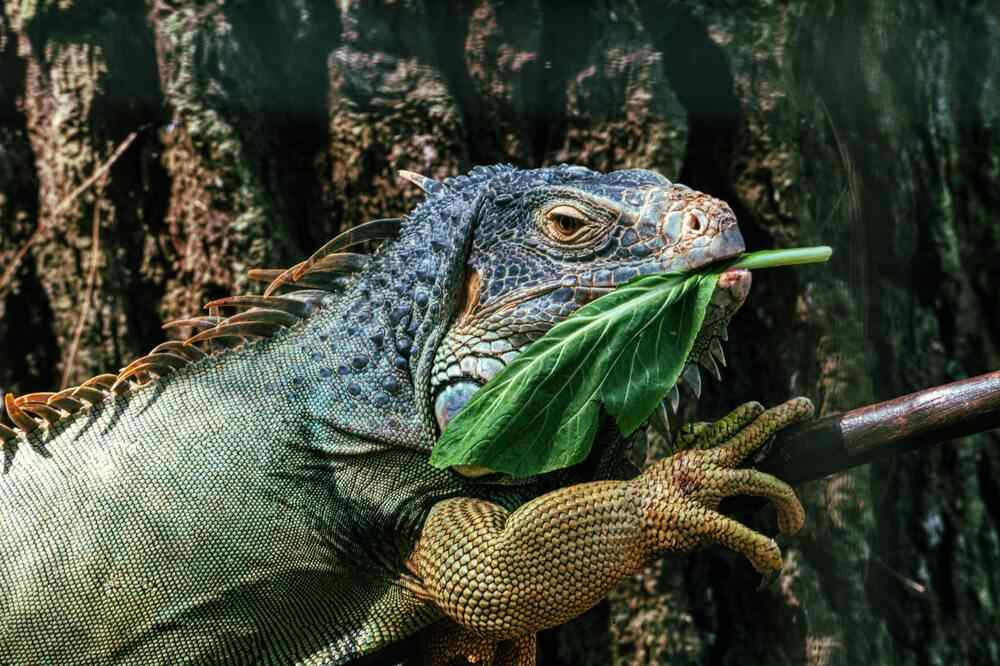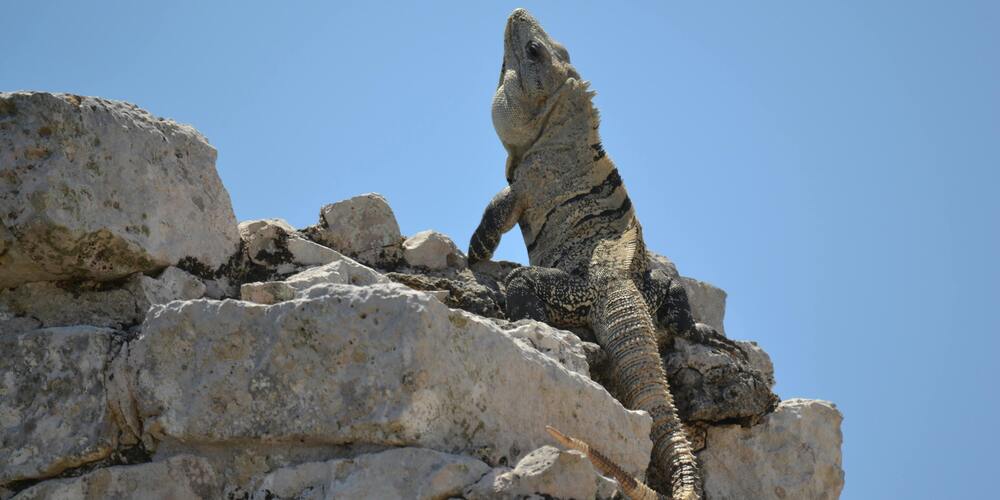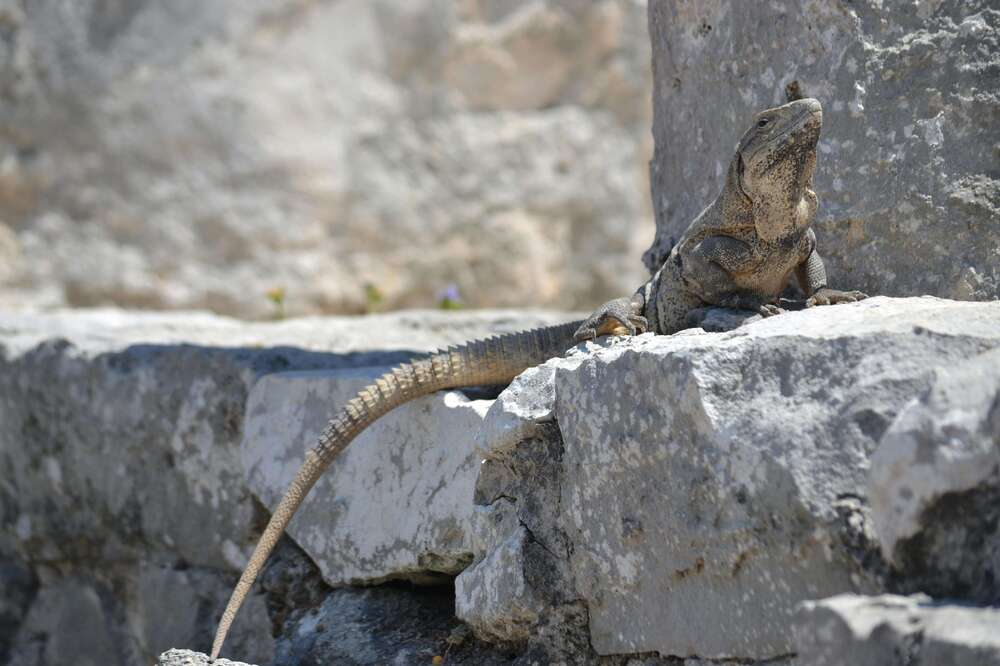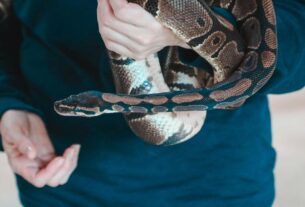Welcome to ‘Iguana Insights: The Ultimate Guide to Pet Iguana Care,’ where we dive into the fantastic world of these scaly friends! If you have ever been fascinated by iguanas, prepare for a fun journey with them. This guide is not just about making a comfortable home; it is like giving your scale-covered friend a spa day. Why does caring for iguanas matter? Imagine having a lively, slithery roommate – knowing how to care for them ensures they stay happy. Our adventure together offers tips, tricks, and a bit of laughter as we explore everything from creating the perfect iguana home to understanding their language (well, maybe not that last part). Join us on this scaly adventure, and let’s uncover the secrets of being the best iguana enthusiast!
Choosing Your Iguana
Common Iguana Species for Pets

These are some common iguana species that are kept as pets:
- Green Iguana (Iguana iguana): The green iguana is one of the most popular pet iguanas. They are known for their vibrant green coloration and can grow quite large.
- Rhinoceros Iguana (Cyclura cornuta): Recognized for the horn-like structures on their snouts, rhinoceros iguanas are impressive-looking reptiles. They are generally more docile compared to other iguana species.
- Red Iguana (Iguana iguana): Similar to the green iguana but with color variations, red iguanas may have reddish or orange hues. They require specific care and a well-maintained habitat.
- Blue Iguana (Cyclura lewisi): Native to the Grand Cayman Islands, blue iguanas are critically endangered in the wild. Some individuals are kept as pets, but they require specialized care.
- Black Spiny-tailed Iguana (Ctenosaura similis): Also known as the black iguana, this species has a distinctive spiny tail. They are more terrestrial than arboreal and can be suitable for some reptile enthusiasts.
- Cuban Rock Iguana (Cyclura nubila): These iguanas are found in various colors, including shades of green, gray, and brown. They have unique behaviors and dietary requirements.
- Chuckwalla (Sauromalus spp.): Although not an actual iguana, the chuckwalla is a lizard species that is sometimes kept as a pet. They are known for their robust build and colorful appearance.
Before choosing an iguana as a pet, it is crucial to research the specific needs and requirements of the species you are interested in. Iguanas generally require spacious enclosures, proper lighting, and a balanced diet to thrive in captivity. Additionally, be aware of the potential size and lifespan of the species you are considering, as they can vary significantly among different types of iguanas.
Selecting a Healthy Iguana
When it comes to your future iguana companion, health is wealth. Keep an eye out for clear eyes, a well-rounded body, and an alert demeanor – these are all signs of a healthy iguana ready for fun adventures. Check for any signs of respiratory issues or skin abnormalities. Do not be shy about asking about the iguana’s diet and previous living conditions. Remember, a happy iguana is a healthy iguana!
Considerations for Iguana Adoption vs. Purchase
Now, the big decision: should you adopt or purchase your scaly friend? Adoption is a noble choice, giving an iguana in need a second chance. However, purchasing might be your route if you are set on a specific breed or size. Whichever path you choose, ensure you are ready for the commitment and responsibility of iguana ownership. Your future iguana friend will thank you with tail wiggles and plenty of scaly affection.
Setting Up the Perfect Iguana Habitat

Now that you have found your scaly soulmate, it is time to create a home that is nothing short of an iguana paradise.
Terrarium Size and Design
First, size matters when it comes to an iguana’s abode. Opt for a spacious terrarium that allows for both horizontal and vertical movement. Iguanas love to climb and explore, so a taller enclosure with branches and platforms is ideal. Do not forget to consider proper ventilation – a breath of fresh air keeps the scales happy!
Lighting and Heating Requirements
Sunbathing is an iguana’s favorite pastime, and we are here to bring the sunshine indoors. Invest in full-spectrum UVB lighting to replicate the natural sunlight they adore. Maintaining the correct temperature is crucial, too, so equip your terrarium with a basking spot for that perfect blend of warmth and comfort.
Proper Substrate for Iguana Comfort
Your iguana deserves a comfortable and safe surface to roam. Coconut coir or cypress mulch are excellent choices for substrate – they retain moisture, aid in shedding, and provide a cozy space for those little lizard feet.
Furnishing the Terrarium with Climbing Structures and Hiding Spots
Enrich your iguana’s environment with various climbing structures and hiding spots. Branches, logs, and rocks offer great climbing opportunities, while strategically placed hiding spots provide security. Create a diverse landscape that encourages exploration and displays your iguana’s natural instincts.
Your iguana’s habitat will become a haven of joy and relaxation with the right combination of space, light, comfort, and enrichment.
Nutrition and Feeding
A well-fed iguana is a happy iguana!
Understanding the Iguana Diet in the Wild
To truly cater to your iguana’s dietary needs, it is crucial to understand what they munch on in the wild. Iguanas are herbivores, primarily feasting on various leaves, fruits, and flowers. Mimicking this natural diet is vital to promoting their overall health and happiness.
Recommended Commercial Diets for Pet Iguanas
Commercial iguana diets can be a convenient and balanced option. Look for high-quality, nutritionally complete pellets designed explicitly for iguanas. These often contain a mix of essential vitamins and minerals, ensuring your scaly friend gets a well-rounded meal with every nibble.
Fresh Fruits and Vegetables: A Vital Component
Variety is the spice of an iguana’s life, especially regarding fresh produce. Introduce a colorful array of fruits and vegetables into their diet, such as leafy greens, berries, and bell peppers. These add nutritional value and cater to your iguana’s taste buds.
Calcium and Vitamin Supplements
Consider incorporating calcium and vitamin supplements into their diet to fortify your iguana’s health. Dusting their food with a calcium powder or providing a reptile-friendly vitamin supplement ensures they receive the extra boost needed for bone health and overall vitality.
Remember, a well-balanced and varied diet is the key to a healthy, happy iguana. Keep their meals exciting, provide the nutrients they crave, and watch your scaly friend flourish with each delightful bite!
Handling and Bonding
Building a strong bond with your iguana is like unlocking the secret to a scaly friendship that lasts a lifetime.
Developing Trust with Your Iguana
Patience is the name of the game when it comes to winning over your iguana’s trust. Start by spending quality time near their habitat, allowing them to observe you without feeling threatened. Gradually introduce gentle interactions, like offering treats or letting them explore your hand. Building trust is gradual, but the rewards are worth the wait.
Proper Techniques for Handling
When it is time for hands-on interaction, approach your iguana calmly and confidently. Support their body securely, especially when lifting them, to ensure they feel safe and stable. Begin with short handling sessions, gradually increasing the duration as your iguana becomes more comfortable. Be mindful of their tail – it is a sensitive part, and some iguanas may be protective of it.
Signs of Stress and How to Address Them
Understanding your iguana’s body language is crucial. Suppose they display signs of stress, such as tail lashing, hissing, or color changes. In that case, it is essential to respect their boundaries. Retreat and give them space to calm down. Consistent positive interactions and respecting their cues will help minimize stress and create a positive bonding experience.
Building a strong bond with your iguana takes time. Still, with patience, respect, and gentle handling, you will soon enjoy the company of a scaly friend who trusts and appreciates you. The journey to a deep, meaningful connection starts with a gentle touch and a whole lot of understanding.
Health and Wellness

Ensuring the well-being of your scaly companion is paramount.
Common Health Issues in Pet Iguanas
Being proactive about your iguana’s health starts with awareness. Watch for common health issues like respiratory infections, metabolic bone disease, and parasites. Monitor their behavior, appetite, and any changes in appearance. Early detection is often the key to effective treatment.
Regular Veterinary Check-ups and Care
Just like any other pet, iguanas benefit from routine veterinary check-ups. Find a reptile-savvy veterinarian who can assess their overall health, provide necessary vaccinations, and offer guidance on preventive care. Regular visits ensure that potential health concerns are addressed promptly, keeping your scaly friend in the best shape possible.
Parasite Prevention and Treatment
Parasites can be annoying, but you can keep your iguana free from unwanted guests with proper preventive measures. Regularly check their feces for signs of parasites and consult your veterinarian for appropriate preventative measures. If treatment is necessary, follow your vet’s advice to ensure your scaly companion’s swift and effective recovery.
Remember, a proactive approach to health and wellness is the key to a thriving iguana. By staying vigilant, scheduling regular check-ups, and promptly addressing health concerns, you’ll provide the best care possible for your scaly friend, ensuring they lead a long and happy life by your side!
Behavioral Insights
Cracking the code to your iguana’s behavior is like unlocking secrets to a happy, contented, scaly friend.
Understanding Iguana Behavior
To truly connect with your iguana, it is essential to comprehend their behavior. Iguanas are creatures of habit, and understanding their natural instincts, such as basking, climbing, and territorial tendencies, provides valuable insights into their world. Observing their body language, from head bobbing to tail flicking, helps decipher their moods and preferences.
Recognizing Signs of Aggression or Distress
While iguanas are generally docile, understanding signs of aggression or distress is crucial for your safety and theirs. Watch for behaviors like hissing, tail whipping, or inflated dewlaps, which may signal discomfort or displeasure. If you notice these signs, giving your iguana space and assessing the environment for any potential stressors is essential.
Enrichment Activities for Mental Stimulation
Keep your iguana’s mind sharp and engaged with various enrichment activities. Create a stimulating environment with climbing structures, hiding spots, and items to explore. Offer a diverse array of textures, from different substrates to varied surfaces for climbing. Interactive feeding, puzzle toys, and introducing new scents can also provide mental stimulation, keeping your iguana entertained and happy.
Breeding Considerations
Explore the key considerations to ensure a safe and fulfilling breeding experience for you and your scaly companions.
Determining the Sex of Your Iguana
Before delving into breeding, it is essential to accurately determine the sex of your iguanas. While it may be relatively straightforward in some species, consulting with a reptile-savvy veterinarian or an experienced breeder can provide expert guidance. Understanding the gender of your iguanas is crucial for responsible breeding practices.
Responsible Breeding Practices
Responsible breeding is not just about bringing adorable hatchlings into the world; it is also about ensuring their well-being and the overall health of the breeding pair. Before proceeding, thoroughly research your chosen iguana species’ specific needs and requirements. Consider the genetic diversity of the breeding pair to avoid potential health issues in the offspring. Only breed iguanas when you are well-prepared to provide appropriate care for the hatchlings and find suitable homes.
Caring for Iguana Hatchlings
Once the eggs hatch, a new chapter begins. Hatchlings require meticulous care to ensure their healthy development. Provide a safe and secure environment with proper heating and lighting. Offer a well-balanced diet tailored to the nutritional needs of the young iguanas. Regular veterinary check-ups are essential to monitor their growth and promptly address health concerns.
Remember, breeding iguanas is a significant responsibility beyond the joy of seeing cute hatchlings. It requires dedication, knowledge, and a commitment to the well-being of the entire iguana family. By approaching breeding with care and responsibility, you contribute to the welfare of these incredible creatures and the reptile community as a whole.
Common Mistakes to Avoid
Explore some common pitfalls and crucial mistakes to avoid, ensuring your scaly companion’s happy and healthy life.
Overlooking Temperature and Humidity Control
One of the most critical aspects of iguana care is maintaining the right temperature and humidity levels. Iguanas are cold-blooded creatures, relying on their environment to regulate their body temperature. Inadequate control can lead to stress, illness, and even severe health issues. Invest in quality heating and lighting equipment to create a comfortable and stable habitat that mimics their natural environment.
Inadequate Nutrition and Dietary Issues
Proper nutrition is the cornerstone of a healthy iguana. Many well-meaning owners may inadvertently provide an unbalanced diet or overlook essential nutrients. Ensure your iguana’s diet includes a variety of fresh fruits, vegetables, and high-quality commercial pellets. Avoid feeding them high-oxalate foods and prioritize calcium-rich options. Regularly assess their diet to prevent deficiencies or excesses affecting their well-being.
Neglecting Veterinary Care
Regular veterinary check-ups are not just for dogs and cats; they are equally crucial for your iguana companion. Neglecting veterinary care can result in the oversight of potential health issues. Find a reptile-savvy veterinarian who can perform routine check-ups, address concerns promptly, and provide guidance on preventive care. Early detection of health issues ensures timely interventions and a higher quality of life for your scaly friend.
By avoiding these common mistakes and staying attuned to your iguana’s needs, you are setting the stage for a fulfilling and healthy companionship.
Great job, iguana fans! You have finished our guide to caring for pet iguanas, and your scaly friend must be happy with all the attention. Before we say goodbye, remember some important things for a happy iguana life. Being a good owner is the key to having a great relationship with your iguana. Keep learning, understand what they need, and encourage others to be responsible owners. Share what you have learned so that every scaly friend can get the love and care they deserve. Our iguana journey does not stop here; it is an ongoing adventure we all share. Got questions, thoughts, or stories? Share them below, and let us create a community where iguana fans can learn, grow, and enjoy having scaly pals. As you continue this exciting iguana journey, remember that the bond between you and your scaly friend is special. It’s a journey of love, laughter, and many tail wiggles. May your time with your iguana be as colorful and unique as their scales! Until next time, enjoy being an iguana parent!




